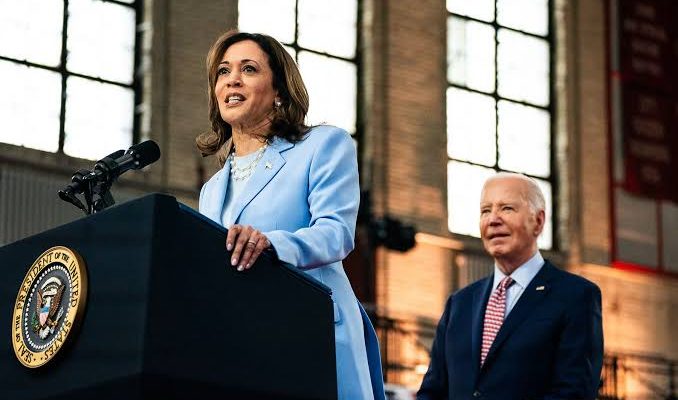In a striking shift of dynamics within the Democratic Party, President Joe Biden made it clear on Monday that Vice President Kamala Harris is at the forefront of their campaign efforts, especially as the 2024 election draws near. At a Labor Day event in Pittsburgh, Biden, instead of taking the spotlight, introduced Harris as the key figure in rallying union support across the crucial “blue wall” states of Michigan, Pennsylvania, and Wisconsin.
“Folks, we’ve made a lot of progress, and Kamala and I are going to build on that progress, and she’s going to build on it,” Biden told a packed union hall, with Harris standing behind him, leading the applause. He added, “I’ll be on the sidelines, but I’ll do everything I can to help,” underscoring his support for Harris in a move that seemed to pass the torch to the vice president.
Despite his apparent willingness to play a supporting role, Biden’s presence was far from understated. His speech, which ran for over 24 minutes—significantly longer than Harris’s—focused heavily on the achievements of his administration. This underlined the delicate balance Biden sought to maintain between showcasing Harris as the party’s future leader while also emphasizing his own accomplishments as they gear up for a potential rematch against former President Donald Trump.
As Biden concluded his speech, he invited Harris to take the stage, where she was met with chants of “Kamala” from the enthusiastic crowd. The moment was capped by a symbolic gesture—Biden clasping hands with Harris and planting a kiss on her forehead, a visual affirmation of the partnership that will drive the Democrats’ campaign forward.
Harris’s speech celebrated the administration’s unwavering support for unions, declaring, “We are so proud to be the most pro-union administration in America’s history.” She highlighted the administration’s achievements in supporting organized labor and reinforced the critical role that unions have played in securing paid leave, vacation time, higher wages, and safer working conditions.
Earlier in the day, Harris had campaigned in Detroit, where she was welcomed onstage by union leaders from various sectors, including autoworkers, utility workers, and teachers. The vice president’s message was clear: unions remain a vital force in American labor, despite their diminished representation, and the Democratic ticket is committed to advancing their cause.
The day’s events saw Harris and her running mate, Governor Tim Walz of Minnesota, crisscrossing the blue wall states, appealing to union voters as the backbone of the Democratic campaign. However, the question looming over these efforts is the current relevance of unions in a labor market where they represent just 10% of workers, half the influence they wielded in the 1980s. Additionally, with Trump’s continued appeal to the working class, it remains uncertain whether traditional union support for the Democrats will hold as firmly as it once did.
In Detroit, Harris shared the stage with Michigan’s Democratic stalwarts, including Governor Gretchen Whitmer, Senator Debbie Stabenow, and Representative Elissa Slotkin, who is vying for Stabenow’s Senate seat. Union leaders such as Shawn Fain of the United Automobile Workers and Randi Weingarten of the American Federation of Teachers also joined the event, underscoring the importance of labor support in the upcoming election.
In Pittsburgh, Harris was flanked by Pennsylvania’s Democratic leaders, including Governor Josh Shapiro and Senator Bob Casey. Meanwhile, in Milwaukee, Governor Tony Evers and Senator Tammy Baldwin of Wisconsin joined Governor Walz to bolster union enthusiasm. These key Democratic figures, all popular within their states, are expected to play crucial roles in energizing the base and ensuring strong voter turnout for Harris.
As the Labor Day events concluded, Governor Shapiro delivered a rallying cry in Pittsburgh: “This is when you labor leaders, y’all got to go knock on your colleagues’ doors. You got to text them. You got to call them.” The message was clear—this election will hinge on the mobilization of the labor vote, with Harris now positioned as the face of that effort.




